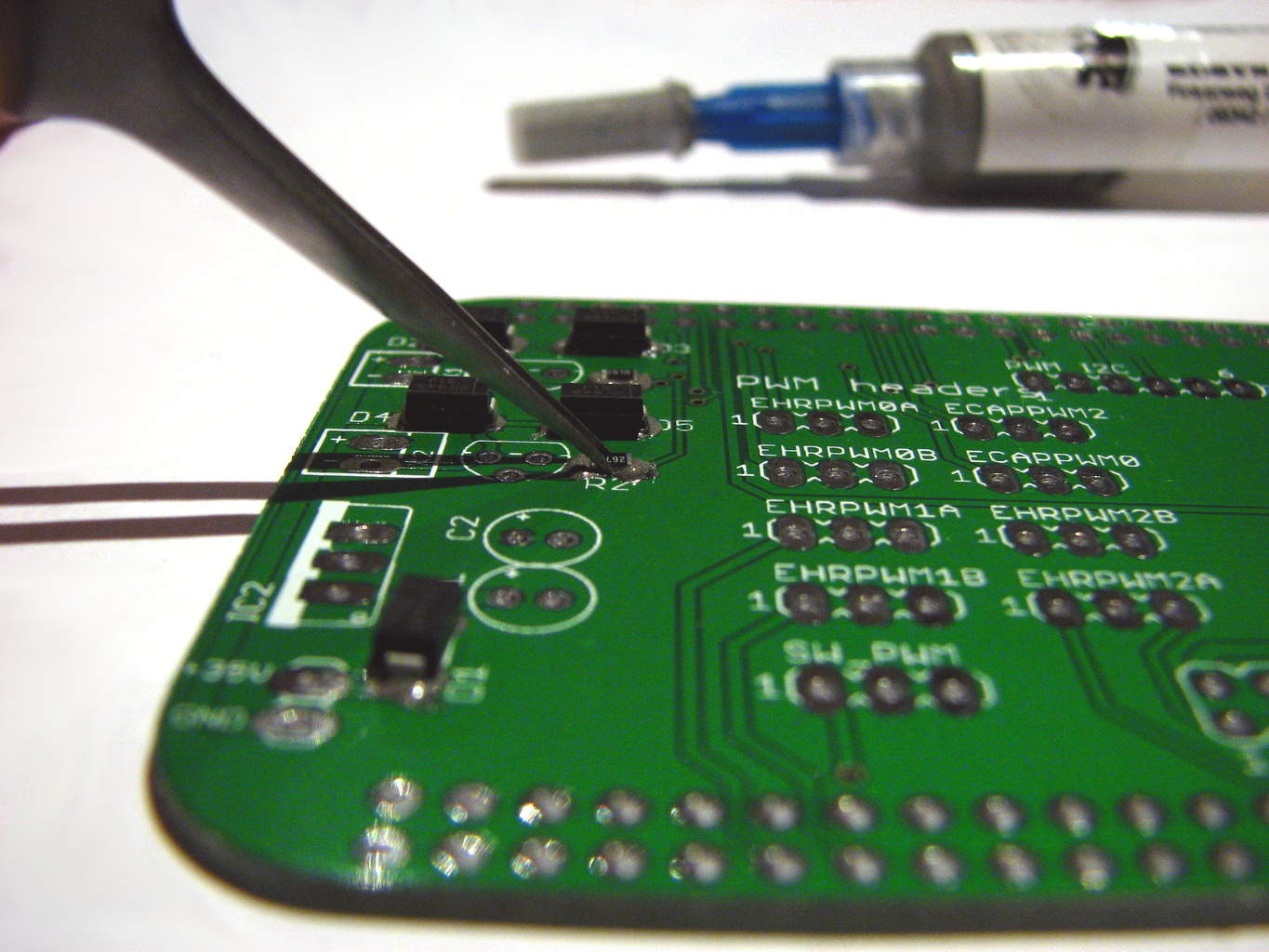What Makes the Best Lead Free Solder?
Lead free solders, like SAC and Sn-Cu solders, follow the RoHS but they still have a long way before we can classify any one of them as the best lead free solder. As we move further into the 21st century, there are many innovations that are pushing the 20th century inventions towards obsoletion. One such innovation is the lead free solders that are phasing the lead-based solders out.
However, for one these solders to be the best lead free solder, they have to match the solderability of lead-based solders. And to make them comparable to lead-based solders, manufacturers add additives such as germanium, nickel, etc. that enhance the soldering properties of lead-free solders.

Lead Free Solders
Lead free solders comprise of tin along with other hard metals such as copper, silver, nickel, etc. These solders, invented in 1996, are still fairly young. Hence, research is still ongoing to test their properties and optimize their features to enhance their solderability.
The stringent regulations of the RoHS in the EU and other similar directives in other countries drove the development of lead free solders in the first place. And now, with these regulations getting stricter, have pushed innovations to make lead free solders better.
Lead free solders, from their inception, have complied with the RoHS. However, the best lead free solder that we find with most solder retailers today not only complies with the governmental guidelines but also provides features that make them comparable to their lead-laden counterparts.
These solders have a high melting point and this is the sole feature that has kept them restrained from outshining the lead-based solders. Moreover, the high concentration of tin in these solders make them more susceptible to the formation of tin whiskers.
Because they comprise of hard metals and melt at a higher temperature, lead-free solders, without additives, often feature lower wettability as compared to their lead-based counterparts.
However, these solders are compatible with additives, which can make up for their shortcomings and can make them as preferable as lead-based solders for soldering.
Best Lead Free Solder: Materials that Make Them the Best
Lead-based solders contain 60-63% tin and lead in a balanced composition. So, to create lead-free solders, the simplest solution was to eliminate lead and make solders comprising of 100% tin. Right? Unfortunately, no.
While 100% tin solders would have saved researchers a lot of time and investment that went on research, they were not suitable to be used for soldering.
Why Does Tin Need Additives?
For one, a high concentration of tin gives way to tin whiskers which are undesirable when it comes to solder joints. Second, tin has a high copper dissolution rate. Using solely tin for soldering would lead to the dissolution of copper on the electrical components more rapidly.
Therefore, solder manufacturers add other elements into the tin to make lead-free solders that have good reflow, offer minimal copper dissolution, and minimize the chances of tin whisker formation.
What Materials Act as Additives in Lead-Free Solders?
These additives include copper, silver, bismuth, nickel, gold, germanium, and cobalt. While all these elements are used to enhance the properties of lead-free solders, tin is still present in the greatest concentration.
All these trace elements enhance the performance of the tin-based solders in one way or another.
- The addition of copper and silver minimizes the concentration of tin and hence prevents the formation of tin whiskers. Additionally, silver also produces joints that appear smooth and are tough against corrosion.
- Lead-free solders are notorious for their poor wettability. However, the addition of germanium, even in trace quantities, enhances their reflow properties and wettability so that they can compete with their lead-based counterparts.
- Electromigration is the most ominous of all the failure-inducing defects. However, cobalt shows the most promising results for enhancing electromigration resistance.
- Nickel is another additive that has helped create the best lead free solder. It enhances the appearance of the solder joint while also reducing the copper dissolution of tin-based metals.
Processes that Use Lead Free Solders
Lead free solders have become ubiquitous, especially in the commercial sector after governmental regulations. Following are only two of the many processes that use lead free solders to create non-toxic electrical components:
Reflow Soldering for SMT
Reflow soldering is a process that solders surface mounted components. This process makes use of solder paste. The solderers apply the solder paste to the circuit board and place the components on top. The board is then sent into soldering ovens which melts the solder. On cooling, the solder solidifies, hence completing the soldering process.
Because lead-free solders melt at a higher temperature, they reflow at a higher temperature. Thus, the reflow soldering process must be optimized accordingly to get the most out of the solder.
Tin-Silver-Copper and Tin-Copper solders are two of the most common types of solders that SMT soldering employs. Both these solders can be eutectic or non-eutectic, based on their composition.
The reflow soldering process offers a very narrow temperature margin for reflow. If the temperature of the oven is not high enough, the solder will not melt and flow properly. However, if the oven is too hot, it may induce thermal damage on the board and its components.
Wave Soldering
Wave soldering is a bulk production process. It utilizes molten solder and is used in PCB manufacturing. Wave soldering is mostly used for soldering through-hole components. However, they have lost some of their popularity to reflow soldering, but are still quite prevalent.
In wave soldering, a pump generates a wave of molten solder. This wave of molten solder comes in contact with the board to be soldered and solders the components in place. In this way, a large number of boards are soldered in a relatively short period.
SAC and Sn-Cu both find extensive use in wave soldering. However, SAC305 is the most preferable when it comes to wave soldering. it contain 96.5% tin, 3% silver and 0.5% copper.
The SAC305 solder is expensive because of the high concentration of silver but has data to support its performance. Moreover, it features good reliability and has better wettability as compared to Sn-Cu.
SAC0307, which contains 0.3% silver and 0.7% copper is a cost-effective alternative to the SAC305.
Manual Soldering
While manual soldering is slow and tedious, it is still prevalent among hobbyists and learners of the soldering process.
Manual soldering utilizes a soldering iron, a solder wire, and an expert solder to get the job done.
The best lead-free solders for manual soldering are, according to some soldering enthusiasts, Sn-Cu solders along with additives like Nickel and Bismuth present in trace quantities.
Comparing SAC and Sn-Cu
Tin-Silver-Copper and Tin-Copper are the most popular lead-free solders. And if you are here after reading the previous section, you would know that both of these solders are preferred for reflow and wave soldering. Below, we will compare some properties of the lead free solders to see which one outranks the other.
Wetting Speed
SAC has moderate wettability due to the presence of copper and silver, while Sn-Cu features low wettability without any additives.
Contact Time
Contact time is the time during which the area which you are soldering is in contact with the liquid solder. Longer contact time increases the chance of the solder board sustaining heat-damage.
Therefore, manufacturers prefer solders with low contact time and SAC solder has a shorter contact time as compared to the Sn-Cu solder.
Dross Formation
Dross formation is the formation of oxides on the tin when it comes in contact with air and is oxidized. It is undesirable and a low dross rate of solders is preferred. SAC features a dross rate of 1.2, while that of Sn-Cu is 2.
Copper Dissolution
No manufacturer would like it if the copper on their circuit board eroded over time. Therefore, these manufacturers prefer low copper dissolution rates when it comes to lead-free solders.
SAC features a high copper dissolution rate of 2.1 as compared to Sn-Cu’s 1. Therefore, Sn-Cu appears to be more promising in minimizing copper dissolution.

Conclusion
The best lead free solder is the one that can compete with their lead-based counterparts and come out at the top. Under normal circumstances, lead-free solders show poor wettability and bad cosmetic features.
However, some materials can be added to lead free solders that make up for their shortcomings. These materials include Ni, Bi, Ge, etc. After the addition of these elements, the lead-free solders can become the best option for all soldering processes including wave soldering, reflow soldering, and even manual soldering.
For More Information, Contact Us Today!




